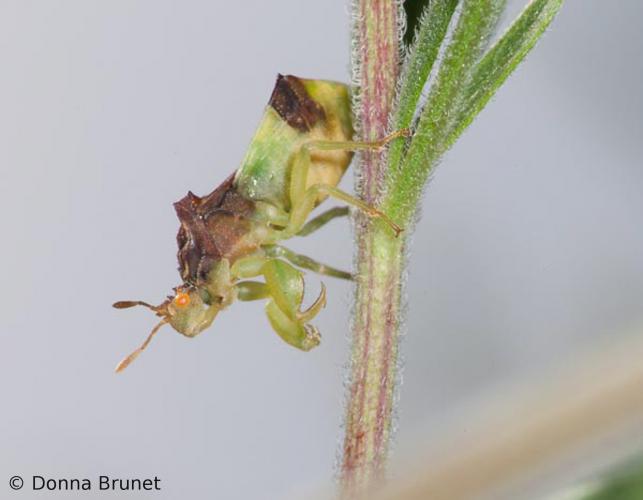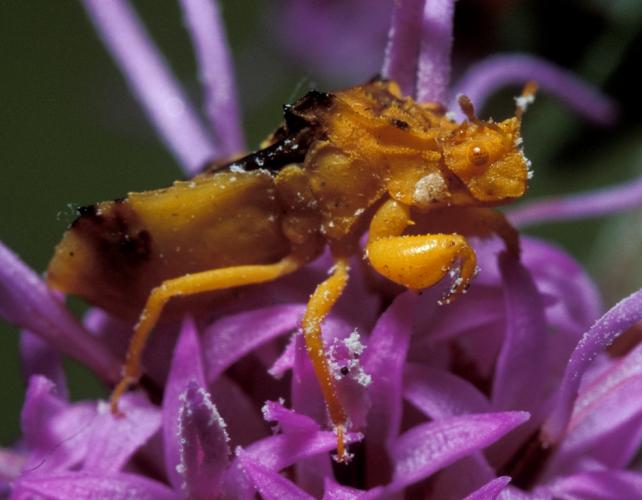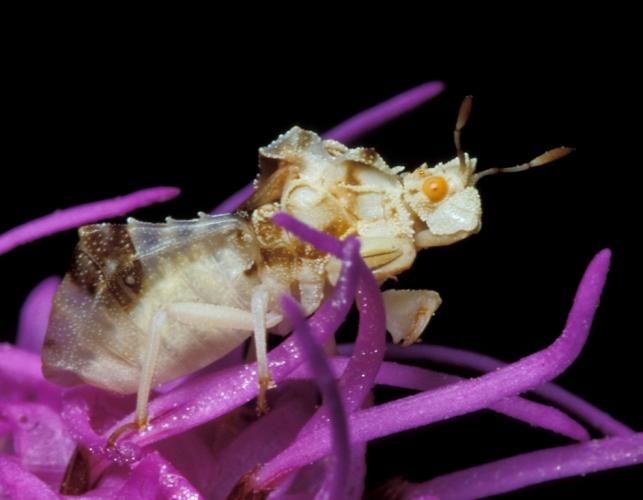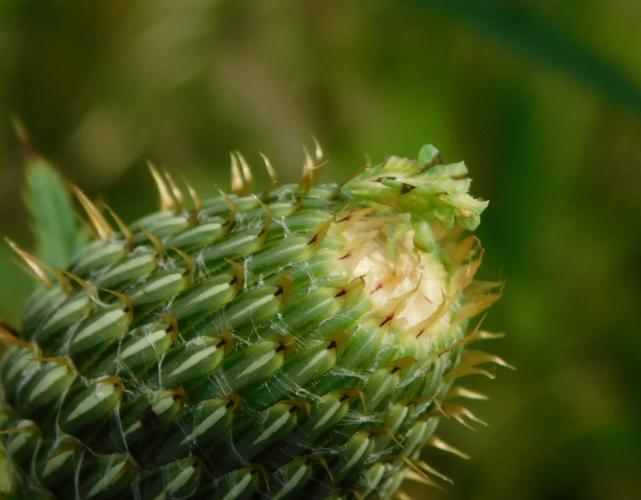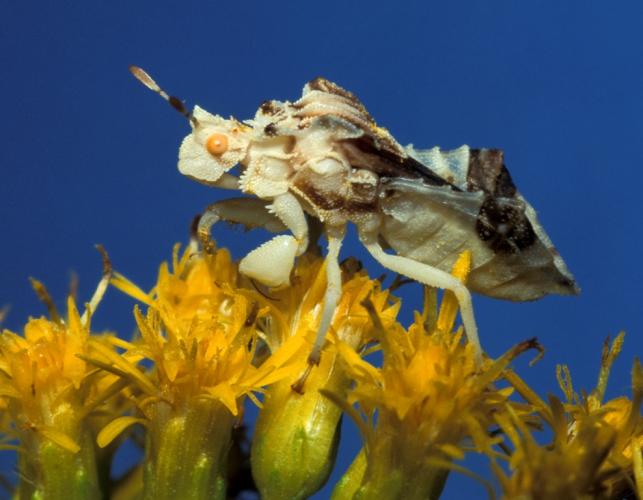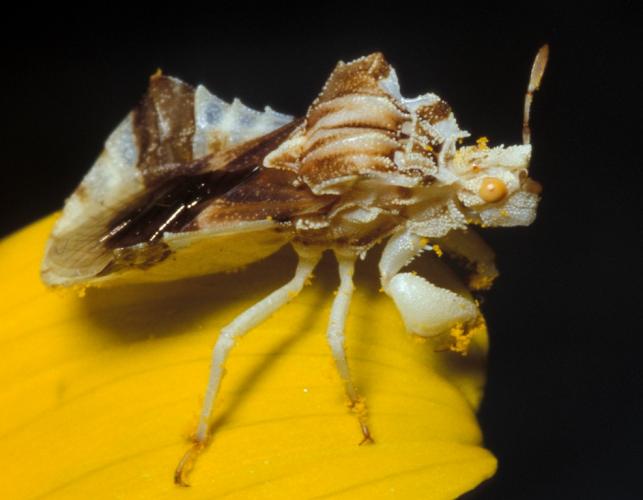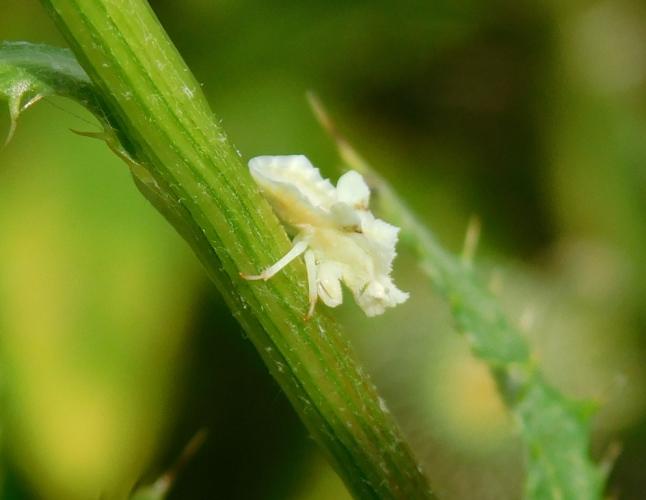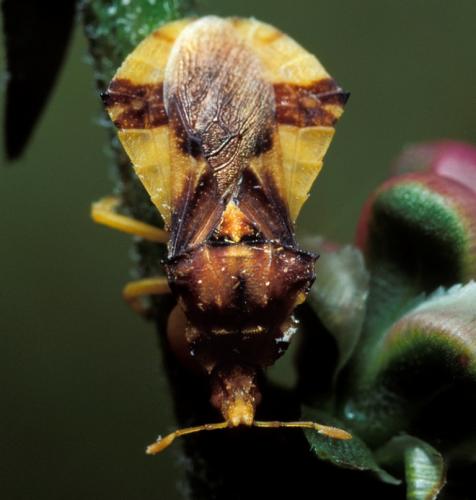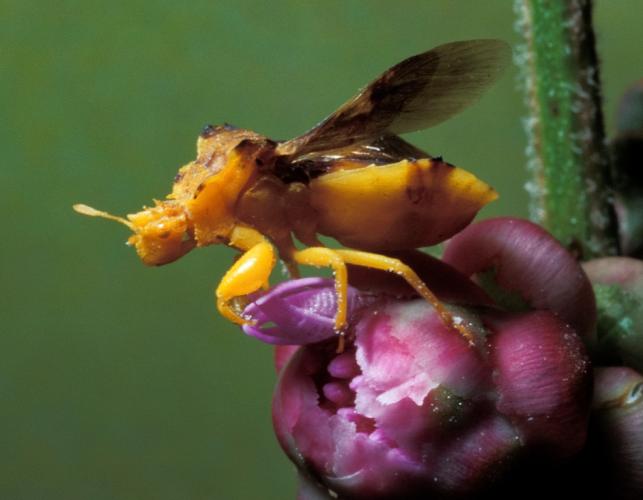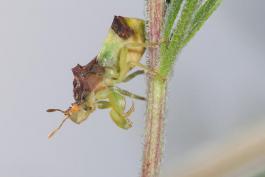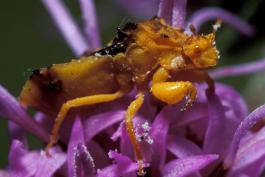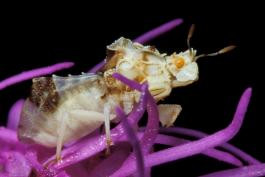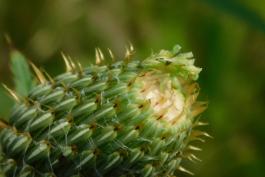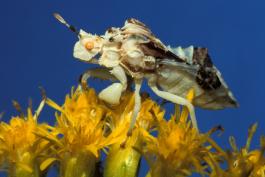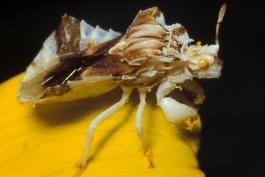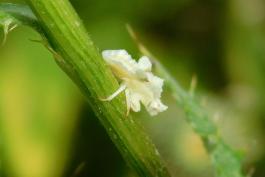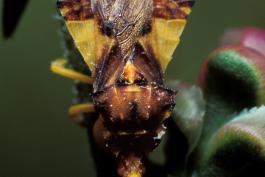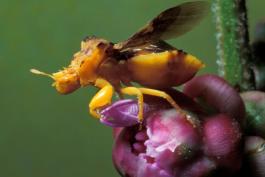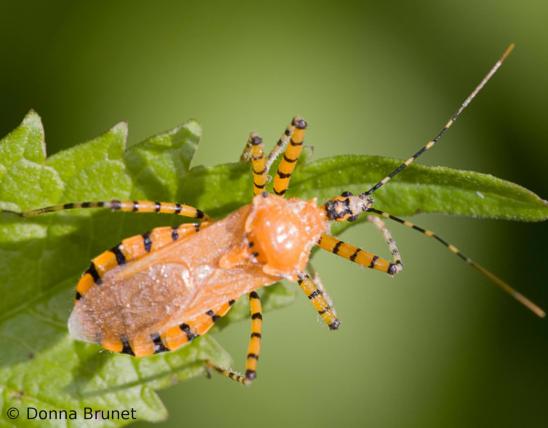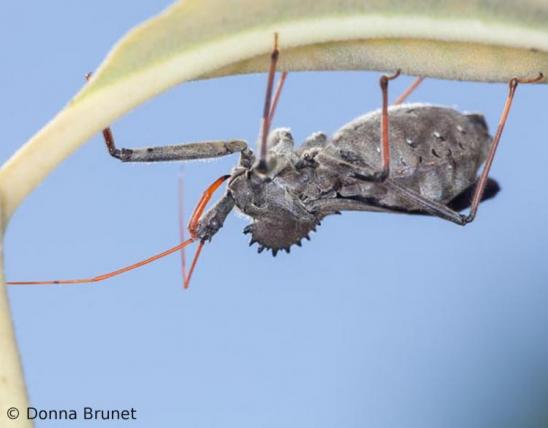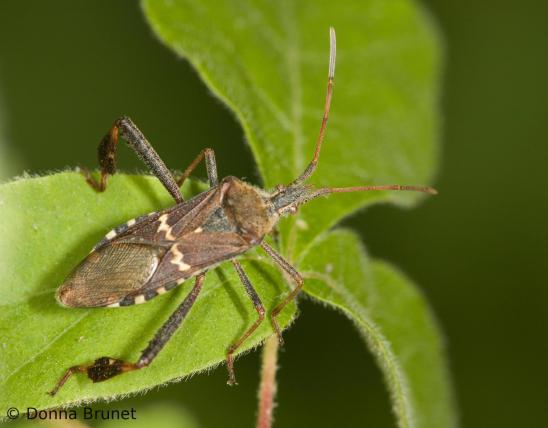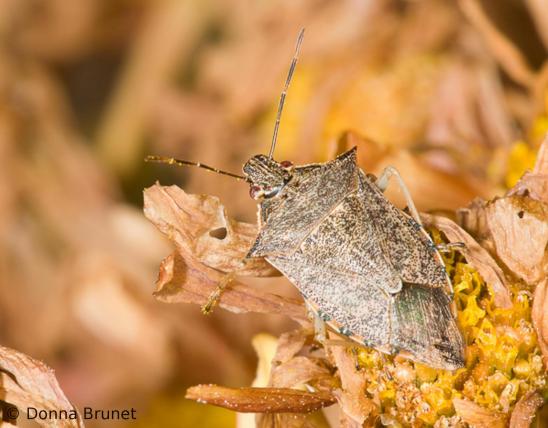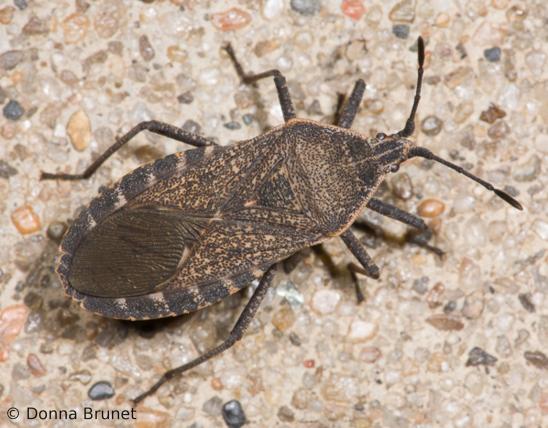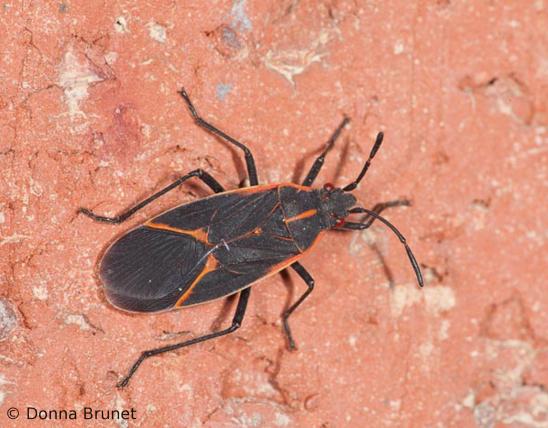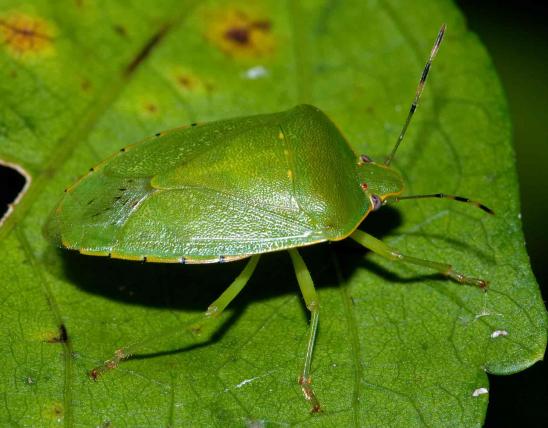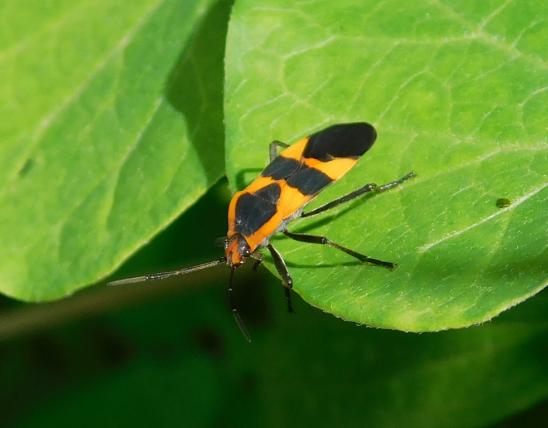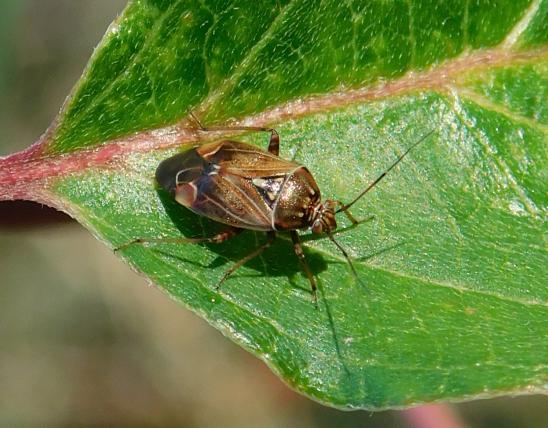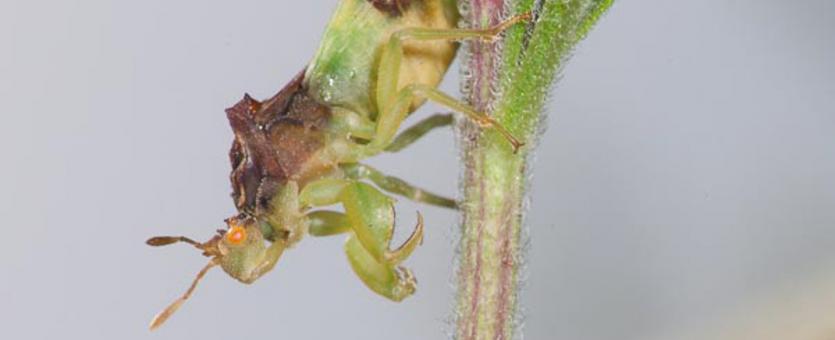
Ambush bugs are a subfamily of assassin bugs. They share many traits with them but can be separated by their hooked forelegs with greatly widened femur sections; clubbed antennae; and widened back portion of the abdomen (so wide that it usually extends outward beyond what the folded wings cover). Most species have jagged body contours, disrupting the outlines of their bodies against the textured background of flowerheads.
There are about 30 species of ambush bugs in 3 genera in North America north of Mexico. Of these species, apparently more than 20 are jagged ambush bugs (Phymata spp.), and although they are the most familiar, the different species within this genus can be very difficult to distinguish from one another. The other (approximately 10) North American species are in the genera Lophoscutus and Macrocephalus.
The colors of ambush bugs are worth mentioning. They can vary quite a bit within a single species. Most are gold, yellow, leaf-green, tan, brown, or white, often with dark mottled patches or bands. Apparently males are often darker or more spotted than females. It’s not clear whether individual ambush bugs change color like chameleons (and some crab spiders) to match the plants they’re resting on, or if they simply move to (or survive on) plants whose colors happen to match their bodies. It could be that they change color with each molt: young individuals, early in the season, being pale green, matching the new foliage of springtime, while older specimens become gold and black in later molts to match the flowers that develop in midsummer. The temperatures during egg stage may also affect the overall darkness of the insects.
Length: usually less than ½ inch.
Statewide.
Habitat and Conservation
Ambush bugs are usually seen in open, sunny areas, such as prairies, roadsides, and fields, because they are almost always found on flowers in the sunflower/daisy family, such as goldenrods and thistles. They wait patiently, right on the flowerheads, to “ambush” insect prey that venture too close. The colors, patterns, and shapes of ambush bugs camouflage them perfectly with goldenrods and other composite flowers.
Food
Ambush bugs use the same hunting strategy as flower crab spiders: they sit, motionless, in a flower, and wait for an insect to come near. Like many crab spiders, they are perfectly camouflaged, and some species may have the ability to change color to match their surroundings. When an unwitting insect approaches, the ambush bug quickly grabs its prey, delivers an injection of immobilizing and digestive fluid, then drinks the liquefying nutrients from the prey’s body. Unlike spiders, which have a pair of fangs, ambush bugs have their mouthparts arranged into a single strawlike (or knifelike!) beak. Ambush bugs often capture insects much bigger than themselves — bees, butterflies and moths, large flies, and more.
Status
The ambush bug group, subfamily Phymatinae, used to be considered its own separate family (spelled Phymatidae — with a d). Today this group is placed within the larger family Reduviidae, the assassin bugs.
Life Cycle
Like other true bugs (members of order Hemiptera), ambush bugs undergo simple metamorphosis — there is no drastically different-looking caterpillar or grub stage. Instead, the life stages between egg and winged, sexually mature adult all look more or less like smaller versions of the adult — minus the wings.
Jagged ambush bugs lay clusters of dark, barrel-shaped eggs in a single layer on leaves or stems of plants, and cover them with a frothy secretion that hardens and protects them from predators and from drying out.
Human Connections
As with other types of assassin bugs, ambush bugs may deliver a painful bite if pressed against your skin. If one lands on you, don’t slap or swat it; instead, just lightly brush it away.
Are they “beneficial” or “harmful”? Most people consider insect predators as beneficial, because they control populations of other insects, including crop pests like aphids. But considering that their prey also includes many species of pollinators, gardeners might consider them problematic. However, in a larger scope, they play important roles in nature. Many animals prey on them, including larger insects, spiders, plus birds and other vertebrates. Over time, the grabbing attempts of ambush bugs and other predators have honed the inbred escape reflexes of their many prey species.
A quick look search on the Internet gives an idea of how people perceive these tiny hunters: they are called “gargoyles,” insects that “will freak you out,” and even “homicidal killers.” The last is a huge exaggeration, since ambush bugs are incapable of killing humans. It’s interesting how humans often perceive our common fellow earthlings as if they were aliens.
“Ambush Bug” is the name of a comic-book character that originally appeared in DC Comics in the 1980s. A humorous, absurd character whose archenemy is an argyle sock, he has been portrayed as both a villain and a hero. He must have little to do with real ambush bugs, which always seem to take themselves quite seriously.
Ecosystem Connections
Ambush bugs are predators that play a role in controlling the populations of the insects they eat. In turn, the small predators are preyed upon by a variety of larger predators.
Ambush bugs have several features we associate with unrelated animals.
- Their hooklike, raptorial (prey-grabbing) forelegs are a lot like those of praying mantises (and the birds called raptors), which also capture prey by simply snatching it.
- Their hunting behavior (waiting motionless and perfectly camouflaged in flowerheads to grab prey) is like that of crab spiders and many other lie-in-wait predators.
- Their use of venom as an aid to hunting is like that of most spiders, several other groups of true bugs, some types of snakes, and even some shrews.
When organisms with different lineages independently develop the same solutions to the challenges of survival and reproduction, biologists call it convergent evolution.
